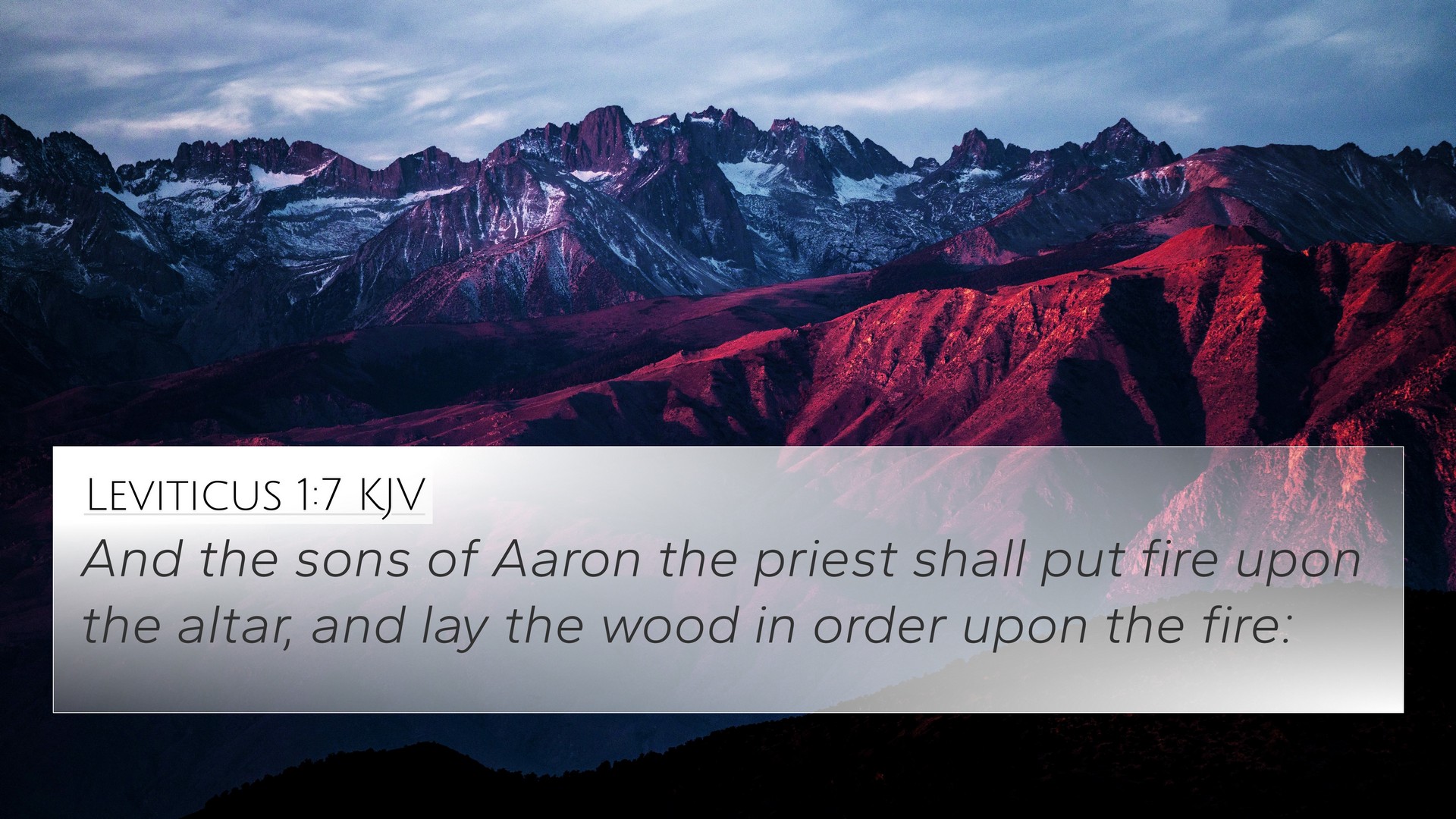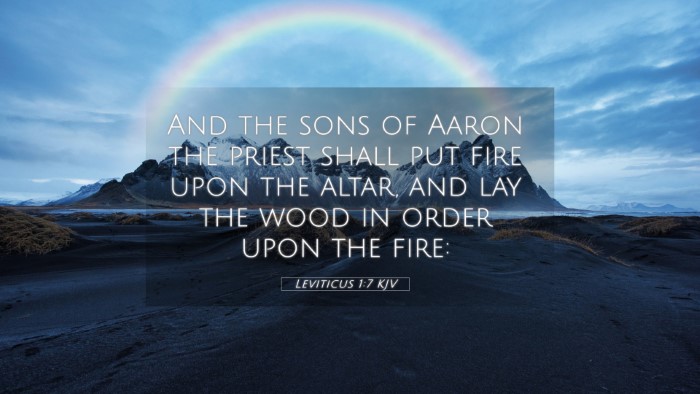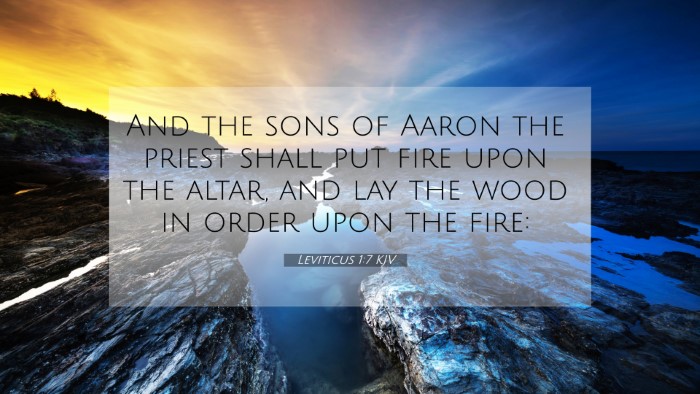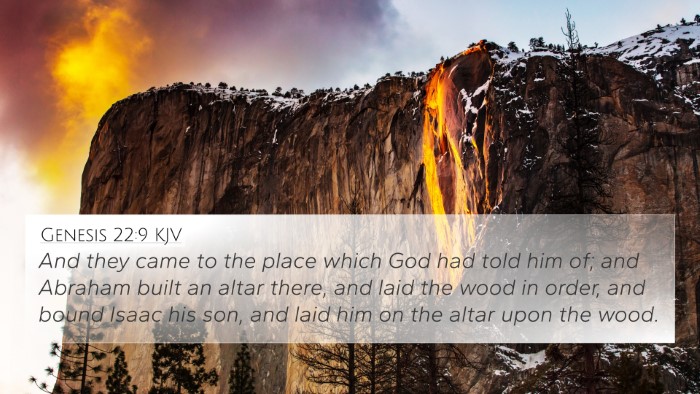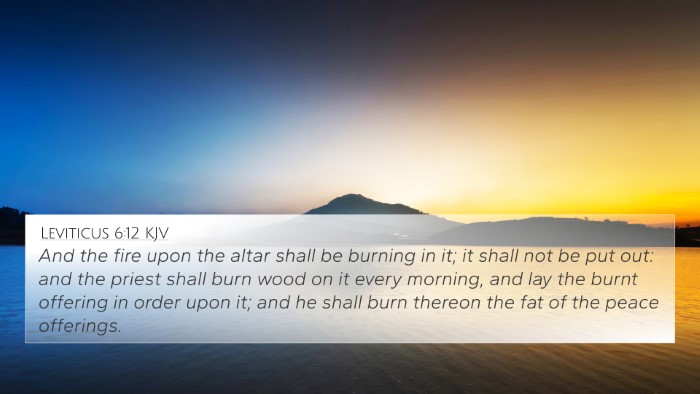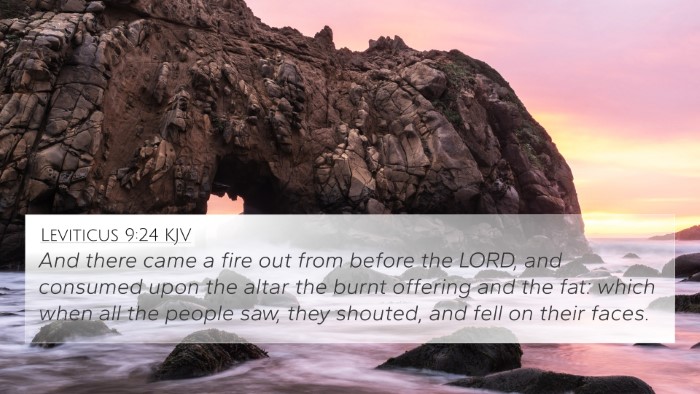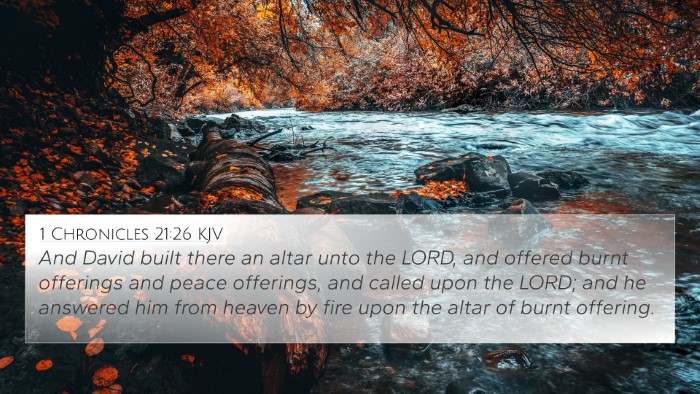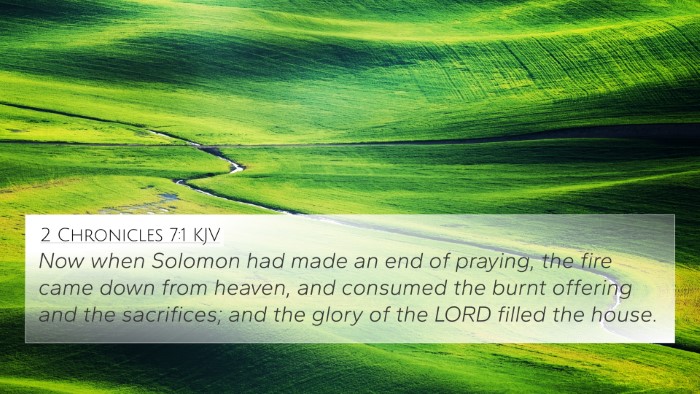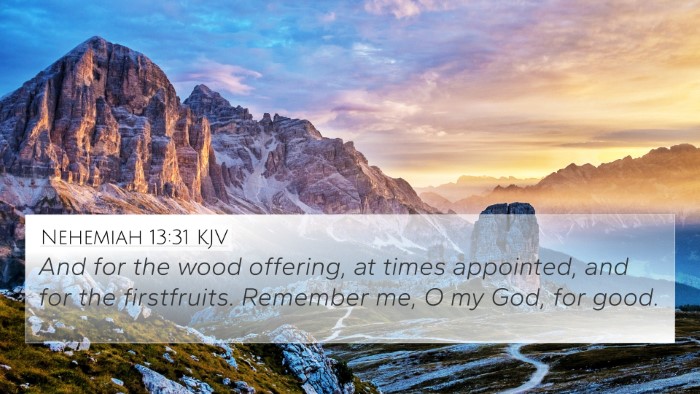Understanding Leviticus 1:7
Verse Reference: Leviticus 1:7 - "And the sons of Aaron the priest shall put fire upon the altar, and lay the wood in order upon the fire."
The verse Leviticus 1:7 provides specific instructions regarding the sacrificial system in ancient Israel, particularly relating to offerings made to God. This commentary draws from public domain sources like Matthew Henry, Albert Barnes, and Adam Clarke to highlight the significance and implications of this text.
Contextual Background
This verse is situated within the framework of the sacrificial laws established by God for the Israelites. These laws were given to Moses and outline how the people are to approach God through the offering of sacrifices. The details found here are critical as they serve to show the seriousness of worship and the reverence needed when approaching a holy God.
Insights from Commentaries
-
Matthew Henry:
Henry emphasizes the role of the priests in the sacrificial offering, noting that they acted as mediators between God and the people. He remarks that the fire signifies God's acceptance of the offerings made by His people. The proper arrangement of wood also symbolizes order and respect in worship.
-
Albert Barnes:
Barnes points out that the act of laying wood upon the fire indicates preparation and readiness to make the offering. The sons of Aaron fulfilling this role reinforces the importance of their priestly duties as part of the worship system. He interprets this as not only a physical act but also reflecting a spiritual truth about preparing one's heart for worship.
-
Adam Clarke:
Clarke elaborates on the details of the sacrifice, suggesting that the fire symbolizes God's presence and the wood represents the human contribution to the offering. He explains that this is a foreshadowing of the ultimate sacrifice of Christ, as every component of the Old Testament sacrifices points towards the New Testament’s redemptive work.
Theological Implications
The instructions for the ritual in Leviticus 1:7 serve as a reminder of the holiness of God and the proper approach to worship. The meticulousness of sacrificial practices illustrates the seriousness of sin and the cost of atonement. Scholars note that the way the altar is prepared is reflective of the preparation required in the hearts of worshipers.
Cross-References and Thematic Connections
This verse connects with several key themes and cross-references throughout the Bible, which enhance our understanding of worship and sacrifice:
- Exodus 29:38-42: Further instructions on daily offerings shed light on the continuous nature of worship.
- Leviticus 1:3: Details about the offerings and the individual’s approach to God through sacrifice.
- Leviticus 6:12-13: Encouragement that the fire on the altar must be kept burning, symbolizing continual devotion to God.
- Hebrews 10:1-4: Discussing the inadequacy of animal sacrifices and their fulfillment in Christ.
- Romans 12:1: The appeal to present our bodies as living sacrifices, linking Old Testament worship to New Testament living.
- 1 Peter 2:5: Believers are described as a royal priesthood, highlighting their role in the spiritual sacrifices to God.
- John 4:24: The call to worship God in spirit and truth, complementing the formal structures of worship outlined in the Old Testament.
Conclusion
In summary, Leviticus 1:7 serves not only as a guideline for the priests in performing sacrifices but also illustrates significant theological concepts such as holiness, mediation, and the preparation essential for worship. By cross-referencing with other biblical texts, one can see a beautiful inter-Biblical dialogue that culminates in the New Testament’s revelation of Christ as the ultimate sacrifice. The connections drawn through these scriptures enhance our understanding of God’s redemptive plan and the seriousness of our worship today.
Further Study Tools
For those interested in deepening their understanding of the connections within scripture, several tools and methods can aid in Bible cross-referencing:
- Using a Bible Concordance to locate themes and keywords across texts.
- Following a Cross-reference Bible Study which systematically links scriptures based on similar themes.
- Exploring Bible Reference Resources that offer insights into the relationships between verses.
- Implementing Cross-referencing Bible Study Methods to study various passages in tandem.
- Accessing Comprehensive Bible Cross-reference Materials to ensure thorough study and understanding.
